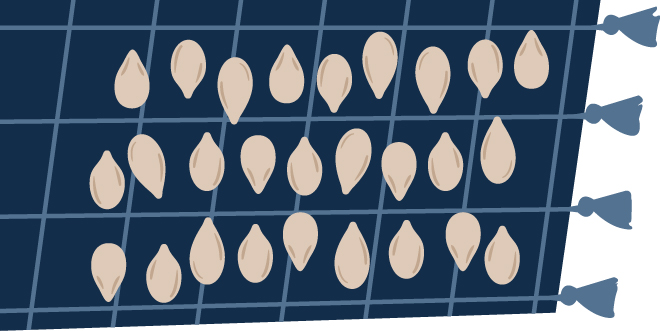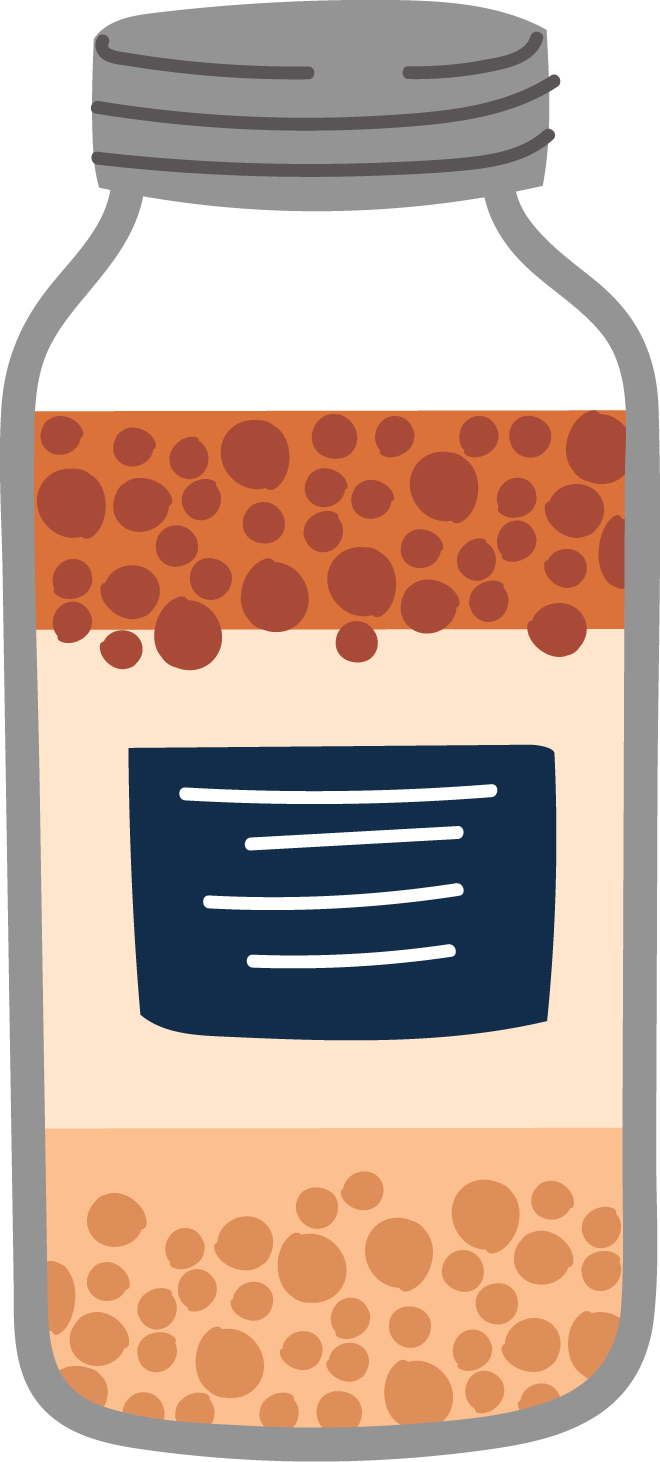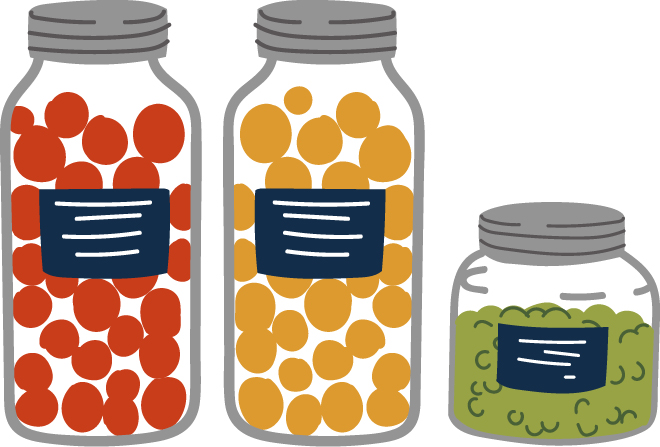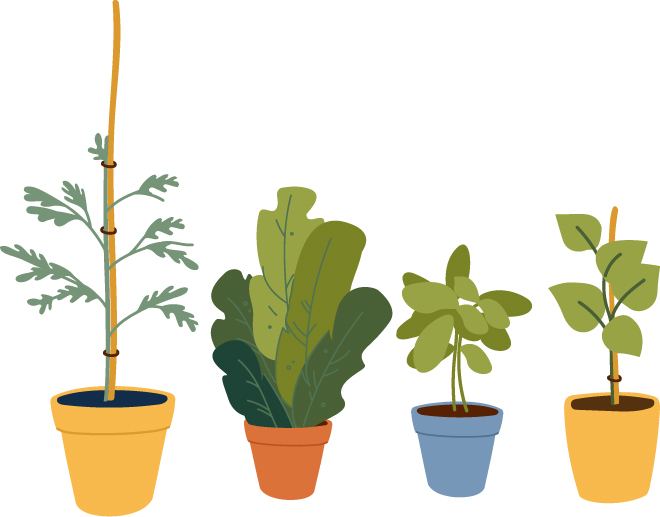Seed saving is part of our agricultural heritage. Our ancestors brought their favorite seeds from across the globe to North America, while First Nations peoples traded seeds each year to replant their gardens. These seeds come with stories about where they originated, family members who planted the seeds, and recipes created with the harvested crops. School gardeners use seed saving as part of school curriculum, tying the practice with agriculture, social studies, engineering, math, and creative writing. Community gardeners save seeds to share their heritage with others. Seed saving can be both a nostalgic practice as well as a practical one. Reasons to save seeds include:
- Saving money; there is no need to purchase seeds
- Preserving biodiversity to promote variation at the genetic and species level
- Continuing cultural traditions and building new ones
- Celebrating our agricultural heritage with heirloom seeds
- Practicing science: botany, physiology, genetics, classification, etc.
- Building community by sharing seeds
Terms to Know
Hybrid plant: a variety or cultivar created by the deliberate crossing of two genetically stable parent plants that results in a plant with desired characteristics, such as plant vigor, disease resistance, or increased fruit production. You may see hybrid plants labeled as “F1.” Hybrid plants do not produce stable seeds, and they are not used for seed saving because they may not have the characteristics of the parent plant.
Open pollination: the transfer of pollen is allowed to occur freely between nonhybrid varieties of the same plant population. The resulting seed produces offspring that express the characteristics of the parent plants.
Cross-pollination: the transfer of pollen from the anthers of a flower on one plant to the stigma of a flower on another plant.
Self-pollination: the transfer of pollen from the anthers of a flower on one plant to the stigma of a flower on the same plant. Despite the name, self-pollinated plants can benefit from pollinators.
Market maturity: the maturity development level of fruits that is ideal for consuming or selling. This is often before physiological maturity.
Physiological maturity: the maturity development level of fruits that is ideal for seed saving. This usually occurs later than market maturity.
Isolation distance: the minimum distance needed to separate a plant or groups of plants from each other to prevent cross-pollination.
Plant for Seed Saving

Be careful with the placement of plants in the garden in order to ensure the purity of the seed you are saving. Depending on the plant variety and its pollination mechanism, the plant variety used for seed saving may need to be isolated from other varieties to prevent contamination. For example, when saving ‘Marketmore 76’ cucumber seeds, other cucumber plant varieties, such as ‘Cool Cucumber’, need to be planted at a distance of at least 1,600 ft away from the Marketmores. The goal is to prevent pollen on a different plant variety from traveling so it does not pollinate and contaminate the purity of your chosen plant variety. Smaller sized home gardens, community gardens, and school gardens may dictate planting only the single crop variety you are interested in saving for that season.
Other isolation methods could include manipulating planting times so that different plant varieties flower at different times, or hand-pollinating and socking plant flowers.
Table 1. Recommended Isolation Distances for Home Gardens
| Crop | Scientific name | Pollination | Isolation distance |
|---|---|---|---|
| Bush Bean | Phaseolus vulgaris | Self | 10 ft |
| Cucumber | Cucumis sativus | Insects | 1,600 ft |
| Sweet Pepper | Capsicum anuum | Self, insects | 160 ft |
| Tomato | Solanum lycopersicum | Self, insects | 10 ft |
Adapted from “Crop-Specific Seed Saving Guide” (https://www.seedsavers.org/site/pdf/crop_chart.pdf)
Choosing the Seeds for Saving
The Pollination Process
The life of a seed begins at pollination. The process by which pollination occurs for a given plant is important for a seed saver to understand, as it varies depending on plant type and may impact seed quality. Pollen is generally spread by wind and insects, although other animals and humans also contribute to pollination. Anything that moves pollen from flower to flower is a pollinator.
Generally, plants are categorized as cross-pollinated or self-pollinated. Cross-pollinated plants need pollen from another plant for pollination and fertilization. Some apple trees and blueberry plants are examples. Self-pollinated plants, on the other hand, can be pollinated by their own pollen. Some self-pollinated plants have the pollen-producing anthers near the pollen-receiving stigma on the same flower, which makes pollination easy. Technically, pollinators are not needed, but they can be helpful to ensure complete pollination. Tomatoes, beans, and lettuce are considered self-pollinating. Some plants have male flowers and female flowers on separate parts of the plant, like squash and cucumbers. There are many different pollination mechanisms, and they can be confusing. Be sure to do some research to learn more about your plants.
be helpful to ensure complete pollination. Tomatoes, beans, and lettuce are considered self-pollinating. Some plants have male flowers and female flowers on separate parts of the plant, like squash and cucumbers. There are many different pollination mechanisms, and they can be confusing. Be sure to do some research to learn more about your plants.
Plant Types
Understanding a plant’s life cycle, seed maturity indicators, dispersal mechanisms, and the environmental impacts on the timing of fruit development will help contribute to the timeline that will guide proper harvesting. While each plant variety has approximate flowering and fruiting dates, be mindful that this process is strongly correlated with local weather conditions and thus may vary from year to year. For example, an early spring and dry summer may cause seeds to set earlier than expected, while chronically wet conditions or a freeze event may impact overall seed quality.
Collecting seeds from annual plants, such as tomatoes and beans, is a great place for beginning seed savers to start because annuals complete their entire life cycle in one growing season. Annual vine crops, such as cucumbers, squash, melons, and pumpkins, are more difficult to save because of cross-pollination, but can be mastered with some practice. Biennials, such as carrots, live for two years and produce seeds in their second year. Collecting seeds from biennials may prove more difficult because of overwintering constraints, insect and disease pressures, and cross-pollination.
It is important to note that it can be illegal to save seeds from plant varieties that are patented or otherwise owned. Information on Georgia seed-sharing laws is linked in the references section of this publication.
Assessing Seed Maturity
To know when to begin collecting, you will need to monitor the plants for physiological cues that will indicate maturity has been reached. For example, while we eat many of our fruits and vegetables at market or horticultural maturity, this does not necessarily mean that these fruits have reached physiological maturity—the state at which seeds have attained their maximum dry weight, germination, and vigor. For example, mature bean seeds are usually dark in color, firm, and dry. On the other hand, seeds that are green and moist are immature, and will generally produce unhealthy seedlings or fail to germinate.
To successfully harvest and process seeds, you will need to know the difference between crops that are wet-seeded and those that are dry-seeded, as they require entirely different harvesting and processing methods. A wet-seeded crop is characterized as having seeds that are embedded within fleshy fruit tissues. Two vegetable plant families with wet-seeded fruits are the nightshade family, Solanaceae (e.g., tomatoes, peppers, and eggplants), and the gourd family, Cucurbitaceae, (e.g., melons, squashes, and cucumbers).

In contrast, seeds of a dry-seeded crop will be enclosed in pods or husks that are usually dried in place on the plant. Several notable vegetable plant families have dry-seeded fruits. The Poaceae plant family contains corn and other grasses. The Fabaceae is the legume family, which contains beans, peas, and lentils. The Brassicaceae family contains many cool-season favorites, like broccoli, cabbage, collard greens, and kale. Despite being a member of the Solanaceae family, certain peppers can be treated as either dry or wet-seeded crops, as they can be processed either when they are fleshy or after they have dried.

If you’re unsure whether your crop has reached physiological maturity, simply cut the fruit open and examine the seeds for firmness, fullness, and color. This is an important step that should not be overlooked, as a delay of only a few days may be the difference between success and failure in collecting a good crop. Many dry-seeded crops that develop pods or capsules disperse their seeds through a process called forceful dehiscence, a process where a seed pod will rupture and expel the seeds when ripe. This often happens at staggered intervals and makes seed collection difficult.
To best manage this process, check your plants every few days to collect any newly matured seeds once maturation begins. You also may try to work around this act of nature by covering the seed pods with a fabric bag or cheesecloth and tying it off with string. This process is often called “socking the pods.” Enough light and air should be able to reach the plant, allowing it to continue to grow. The bag will hold the seeds as they mature and drop. Not only will the bag help prevent damage to the seed pod by pests and birds, but with this strategy you only need to collect seeds once.
Only collect seeds from true-to-type, disease-free plants. Consider desirable traits, such as flavor, size, yield, early or late blooming, maturity date, method of pollination, and collection. To maintain a diverse and stable seed bank, collect seeds from several plants and fruits throughout the harvest season if space allows.
Preparing Seed
Dry Method of Seed Saving
The dry method of seed saving is the simplest and the best for first-time seed savers. Beans, peas, okra, and kale can be saved using this method. Seeds from these plants should be harvested when the pods or seed heads have fully ripened and are dry on the plant. Seeds ready to harvest will often rattle in the pod and begin to fall o ff the plant. Seeds can be left in the pods for storage, or they can be separated from the pods and brought indoors for a few weeks to finish drying.
ff the plant. Seeds can be left in the pods for storage, or they can be separated from the pods and brought indoors for a few weeks to finish drying.
Wet Method of Seed Saving
Seeds from fleshy fruits, such as melons, watermelons, cucumbers, and squash, can be harvested when the fruits are just overripe but not rotten. The fruit is split open, and the seeds are scooped out with a spoon. Seeds are washed and placed on a cloth material to dry. Paper towels should not be used because seeds may stick to the paper and hinder the process.
Fermentation Seed Saving
Some fleshy fruits, like tomatoes, require a fermentation process to sort out the viable seeds. To do so, remove the seeds and pulp from the fully ripe fruit and place the material in a small glass jar with a lid. Add an equal part of water to the jar and cover it with the lid. Place the jar inside your home and away from sunlight for 4 to 5 days, stirring daily. This fermentation process allows the gel-like pulp to separate from the seeds and removes germination inhibitors. Heavy, viable seeds will sink to the bottom, and light, unusable seeds will stay at the top. You will notice an odor developing with this process. When the process is complete, pour off the top seeds and wash the seeds at the bottom of the jar with clean water. Set the seeds out to dry on a coffee filter or screen for one week.

Storage of Seeds
Properly storing your seeds will ensure better germination rates and seed longevity. The ideal storage location is cool, dry, and dark. Therefore, a climate-controlled area will provide the best storage.

The seeds may be kept in plastic bags, paper envelopes, or glass jars. Plastic bags and glass jars can keep additional moisture out. Paper envelopes will allow any heat or water vapor from the seeds to escape and are preferable for short-term storage when seeds may still contain moisture.
For more long-term storage, placing seeds in airtight containers inside of a refrigerator will improve longevity by several years. If seeds are sufficiently dried, freezing will greatly extend their lifespan. Drying seeds down to 5 to 7% moisture and storing at several degrees below freezing is optimal, but not always practical.
Temperature variation and moisture fluctuation are two issues that negatively affect seed longevity. Utilizing silica packets or drying beads in storage can buffer some moisture fluctuation, especially in the humid summer climate of Georgia. Insect and animal pests will feed on stored seeds if they are able to, and refrigerating or freezing seed will eliminate insect pests.
Labelling stored seeds properly helps to keep track of different varieties. It is also advisable to include the year the seed was harvested, as viability decreases over time.

Seed Saving in the School Garden
Basil, lettuce, beans, and peas are possible choices for school gardens, as they work well with the school calendar. The limited size of a typical school garden dictates that the garden manager should choose one variety of a plant type for seed saving per growing season. For example, only one variety of beans or one variety of broccoli should be grown at a time. If you have a larger garden area, you may have room to separate plants by the recommended isolation distance. Some ways to relate seed saving to the school curriculum are:
Agriculture and biology
Teach botany, soil science, plant requirements, pest management, etc.
Business
Determine how much money could be made if the seed was sold versus selling the produce. How much money was spent in growing the plants compared to what could be earned?
Social studies and geography
Discover where the seed type originated and map the route the seed took in getting to Georgia.
History and creative writing
Interview older gardeners who have saved family seeds, creating an oral or written history. The University of North Georgia’s Saving Appalachian gardens and stories project is a successful model.
Engineering
Grow plants while maximizing seed production by creating special trellises, building rain barrels, etc.
Math and science
Determine how many seeds each plant produced. What are some possible reasons some plants produced more seeds (more sunshine, more water, etc.)?
Art
Create artistic seed envelopes.
Community service
Donate saved seeds to a community garden, to another school, or to a community center.

References
Colley, M. & Zystro, J. (2015). The seed garden: The art and practice of seed saving (L. Buttala & S. Siegel, Eds.). Seed Savers Exchange.
Georgia Secretary of State. (2021, December 29). Requirements for non-commercial seed sharing. Rules and Regulations of the State of Georgia. http://rules.sos.ga.gov/GAC/40-12-5-.05
Seed Savers Exchange. (n.d.). Crop-specific seed saving guide. https://www.seedsavers.org/site/pdf/crop_chart.pdf
Seed Savers Exchange. (n.d.). Learn: Seed saving. https://www.seedsavers.org/learn#seed-saving
Status and Revision History
Published on Feb 03, 2022


























































